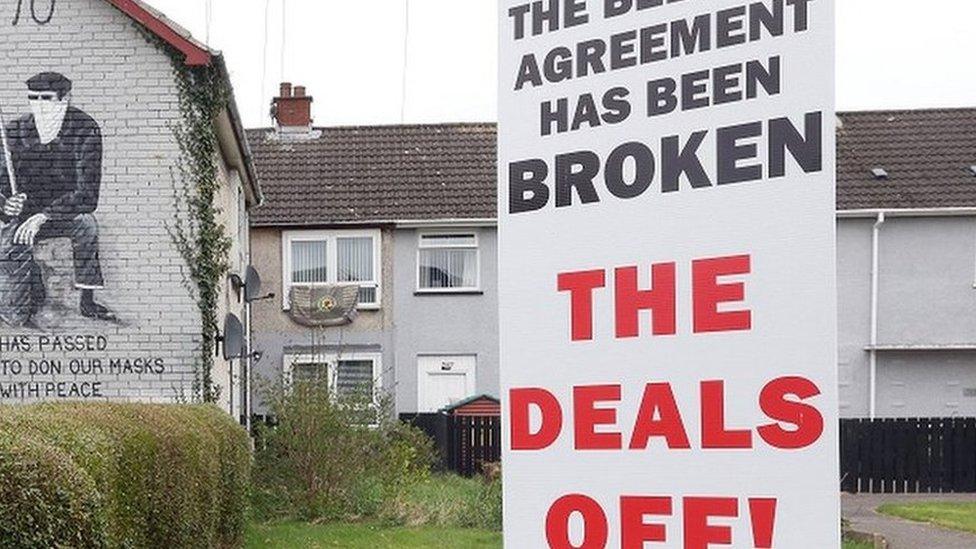Good Friday Agreement: How George Mitchell beat the odds in Belfast again
- Published
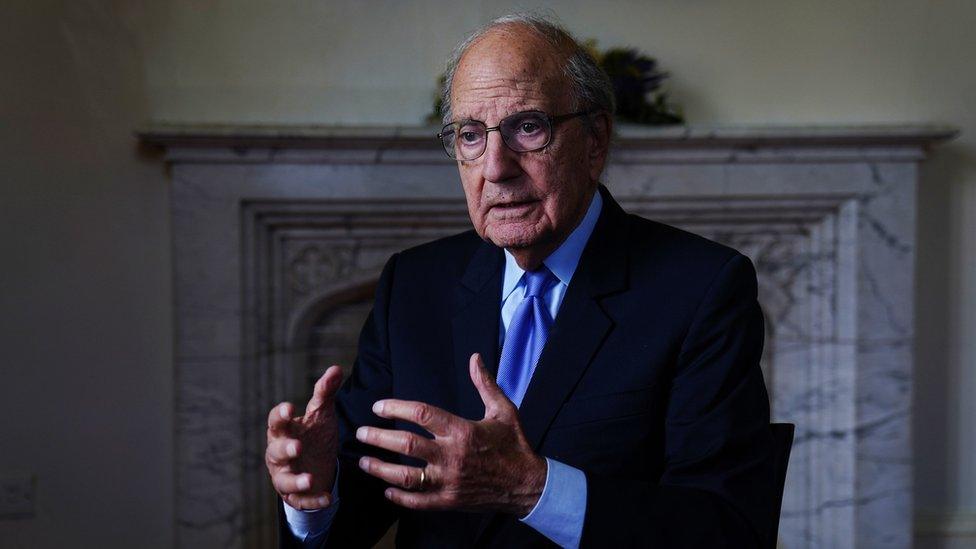
George Mitchell visited Belfast this week to mark the 25th anniversary of the Good Friday Agreement
It is not easy to annoy Senator George Mitchell but he was irked by a question about the political stalemate in Northern Ireland 25 years after the signing of the Good Friday Agreement.
During an interview in Belfast this week, he stared at me and shook his head as I suggested more political progress could and should have been made since 1998.
He took a breath, reached forward and then hit me... with numbers.
"During the Troubles 3,500 were killed in sectarian violence and 50,000 were injured," he said.
"In the 25 years since there have been, according to the Northern Ireland police service statistics' agency, about 164 security-related deaths.
"Life has improved dramatically."
He was making it clear the Good Friday Agreement was not all about good government.
It is just as well. The stop-start Stormont assembly is hardly a model for good governance.
However, for Senator Mitchell that was never the absolute priority.
When he started chairing multi-party talks on a sunny day at the beginning of June 1996, the main issue was life-and-death rather than bread-and-butter politics.
His aim was to find something, indeed anything, that the main parties in Belfast could agree on.
'What human enterprise is perfect?'
A deal was eventually reached 22 months later on a snowy Friday in April 1998.
Looking back on the 30-page document, he said: "Could it have been better? Of course.
"What human activity or enterprise is perfect? None. And none will ever be."
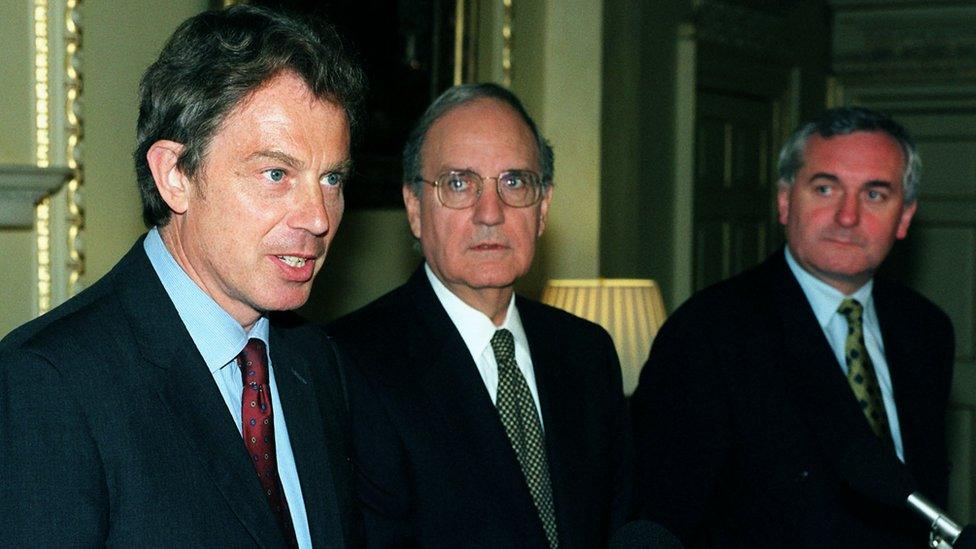
Pictured with Tony Blair and Bertie Ahern in 1998, George Mitchell has been lauded for his role in the peace talks
Senator Mitchell has been lauded locally, nationally and internationally for his role in the negotiations.
He was the glue that kept the politicians together amid arguments, walkouts and controversies.
It is no exaggeration to say there was a row every week. As one of the few journalists who covered every day of the talks I went through a year's supply of notebooks in a month.
There was plenty of news but nothing was really happening. No movement. No progress. Until the final few weeks.
Much has been made about the 11th-hour involvement of three leaders - the then Prime Minister Tony Blair, Taoiseach (Irish Prime Minister) Bertie Ahern and US President Bill Clinton.
Let me throw in three other names, two of which will be unfamiliar to most readers - Kelly Currie, David Pozorski and Martha Pope.
They were Senator Mitchell's team behind the scenes. All Americans, they all gave up two years of their lives to live in Belfast and work with the talks' chair.
They stayed at the Europa Hotel in the city at a time when it was still subject to bomb scares.
They eventually moved out into rented accommodation, not for security reasons but to try to lead a more normal life.
'Listening is hard when it goes on for years'
Martha Pope, a former sergeant-at-arms at the US Senate, was the main adviser.
During the final session of the talks when the deal was done and TV cameras were allowed into the conference room, she could be seen at the right-hand shoulder of Senator Mitchell.
Where is she now? Back in America, enjoying life as a pastel artist.
She now inhabits a much more colourful world than the drab surroundings of Castle Buildings at Stormont where the negotiations took place.

A bust of George Mitchell was unveiled at Queen's University Belfast this week - he had been the university's chancellor for 10 years
In his keynote speech at the Agreement 25 conference at Queen's University Belfast this week, Senator Mitchell paid tribute to all of his colleagues in the international team which oversaw the talks.
He said: "I shared the role with two extraordinary men - the late Harri Holkeri, the former prime minister of Finland, and General John de Chastelain, the former head of the Canadian Defence Forces.
"Each of us was well served by small but very able staffs. For me they included Martha Pope, David Pozorski, and Kelly Currie."
Together they managed to overcome the language barriers at meetings with politicians from Northern Ireland.
Senator Mitchell reflected: "I listened to the same people saying the same things, over and over and over again.
"Many of them talked very fast, some in accents I wasn't familiar with.
"To improve my understanding I held many, many informal meetings, in my office and theirs, where I said little and listened as much as possible.
"Listening, really listening to someone else is hard, especially when it goes on for years.
"But it's also a sign of respect. And I respected them for what they were trying to do."
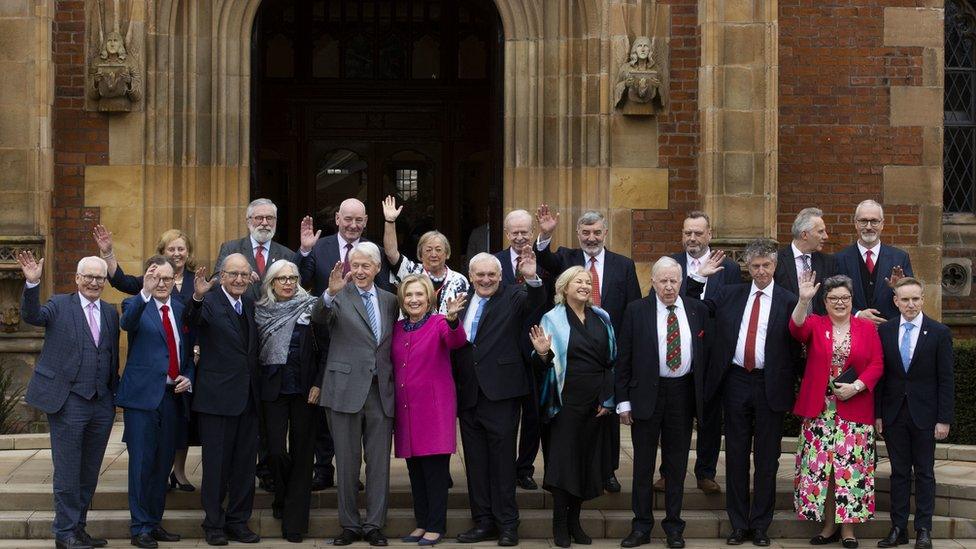
George Mitchell was one of the many senior political figures who gathered in Belfast to mark 25 years since the peace deal
The respect is mutual. The politicians who negotiated the agreement hold Senator Mitchell in the highest esteem.
A bust by the artist Colin Davidson outside Queen's University shows the regard in which the 89-year-old politician-turned-diplomat is held generally.
"When you're looking at a statue of yourself you know the end is near," said Senator Mitchell with a smile as the tribute was unveiled.
For the past three years he has been suffering from acute leukaemia and has been in and out of hospital.
Until the very last moment it was doubtful whether he would make it to Northern Ireland for events marking the 25th anniversary of the agreement.
When it looked like he might not be able to travel to Belfast there was a TV studio near his home in Miami put on stand-by for him to be able to contribute remotely.
Against the odds, Senator Mitchell made it.
Just like in 1998.
- Published20 April 2023
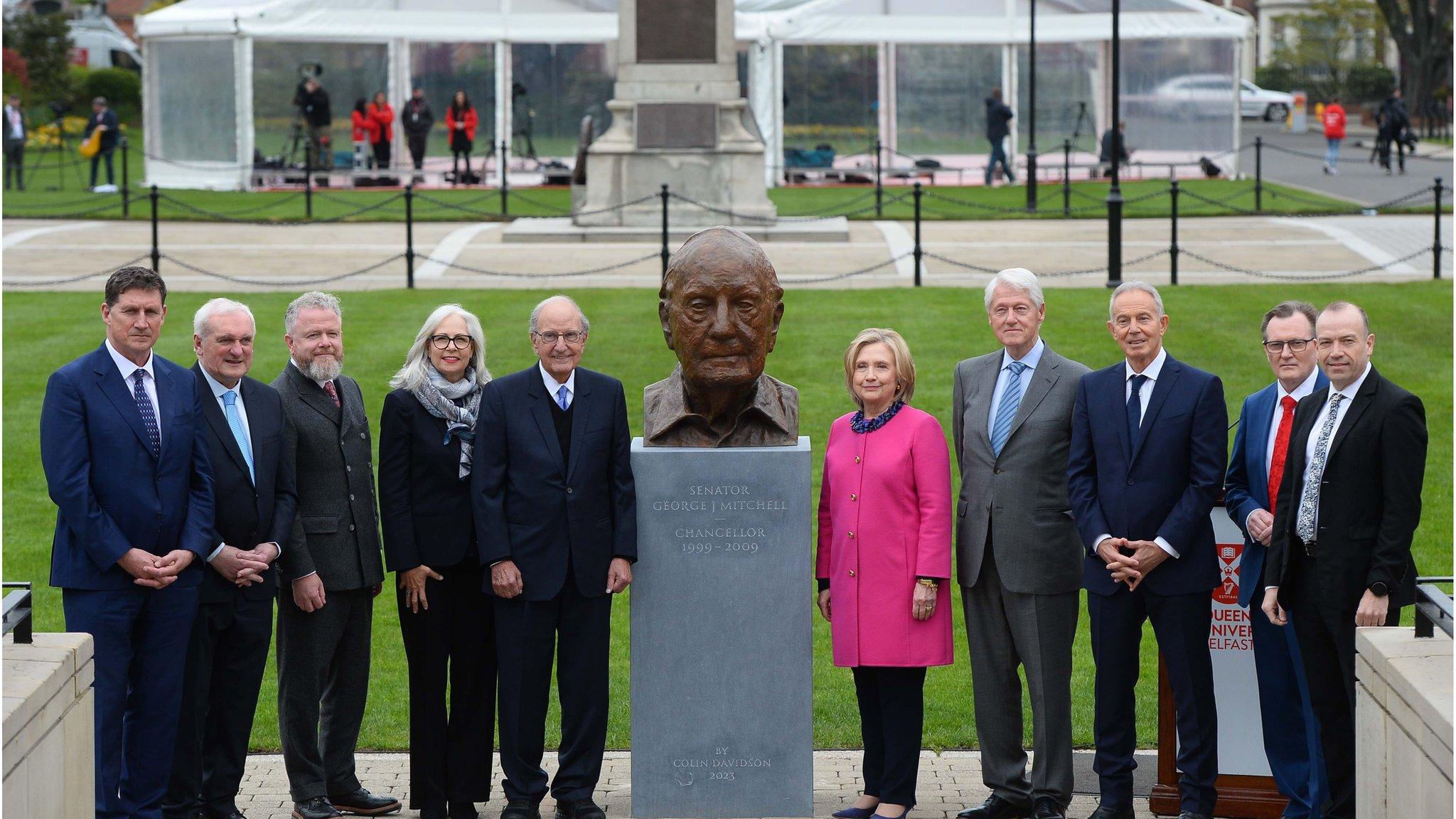
- Published17 April 2023
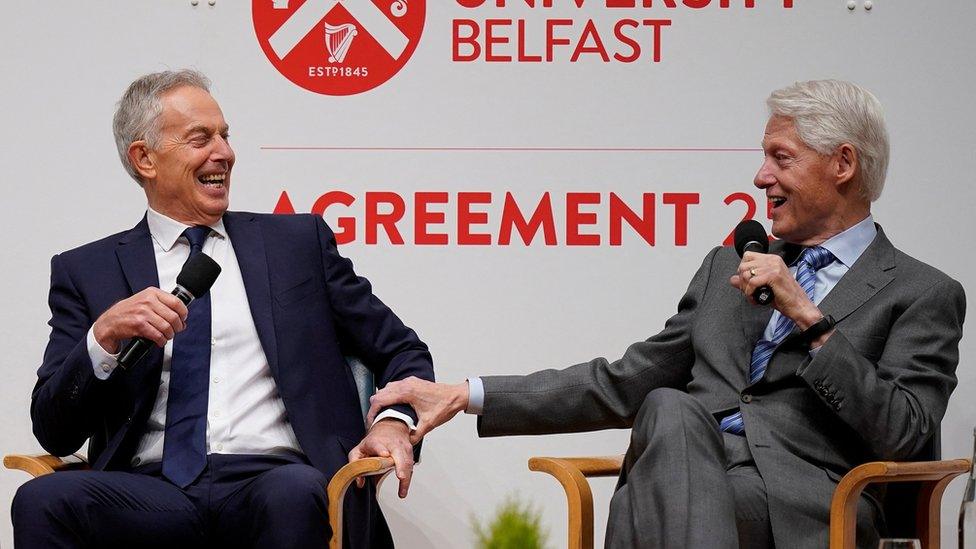
- Published16 April 2023
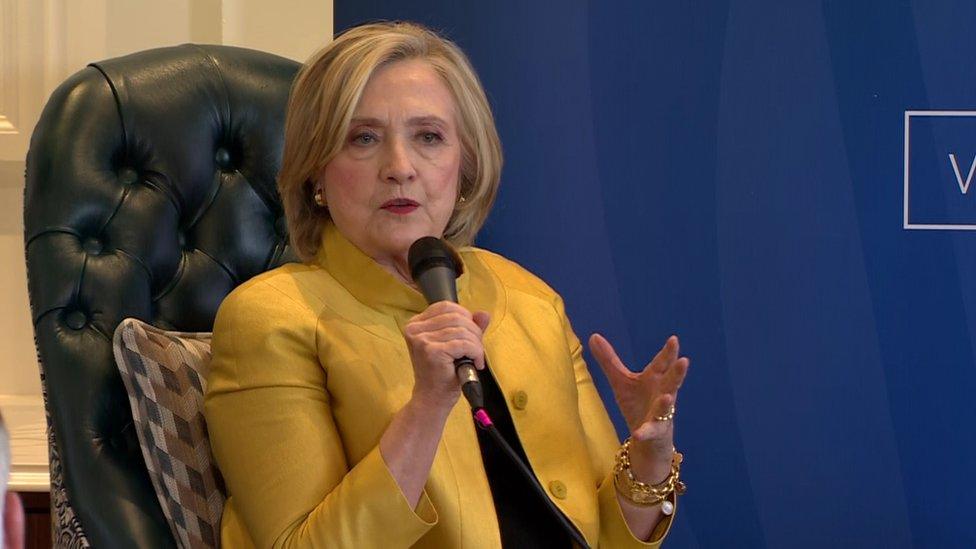
- Published10 April 2023
